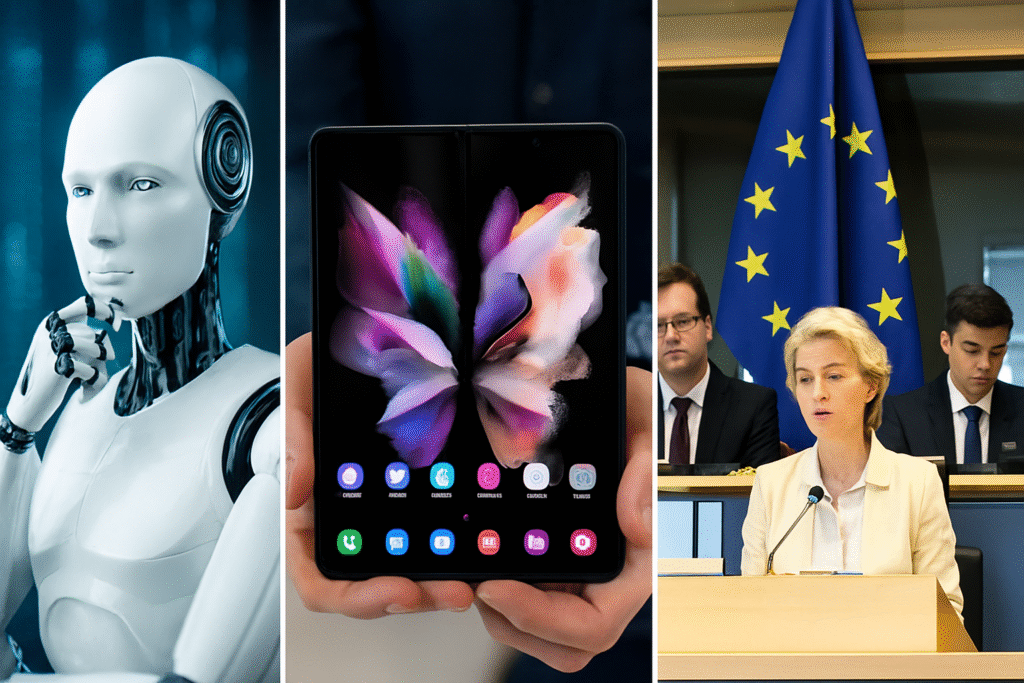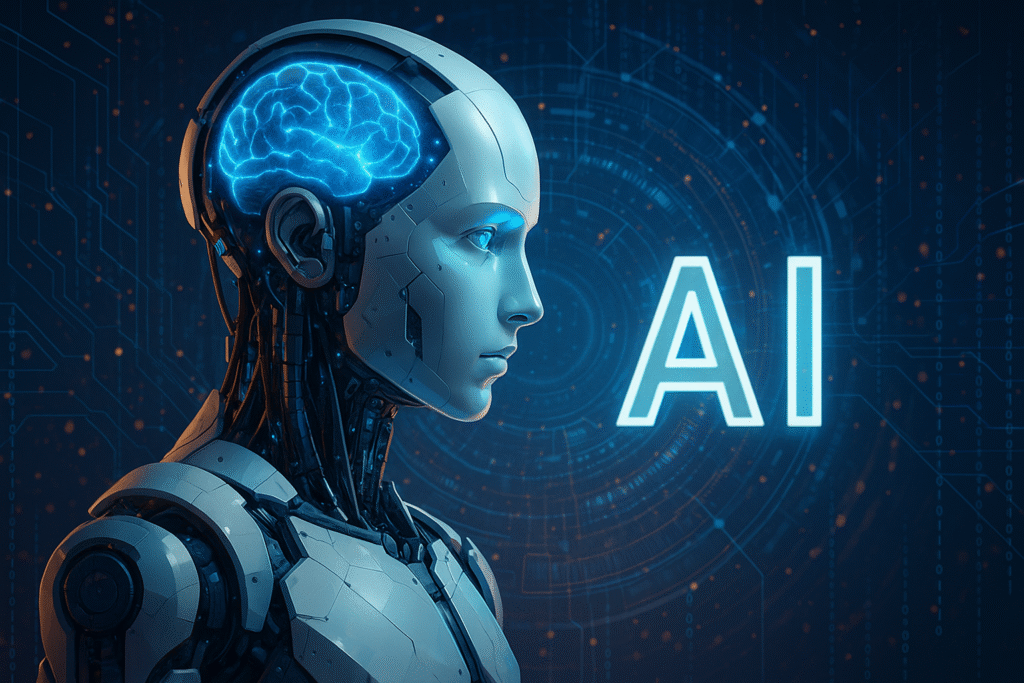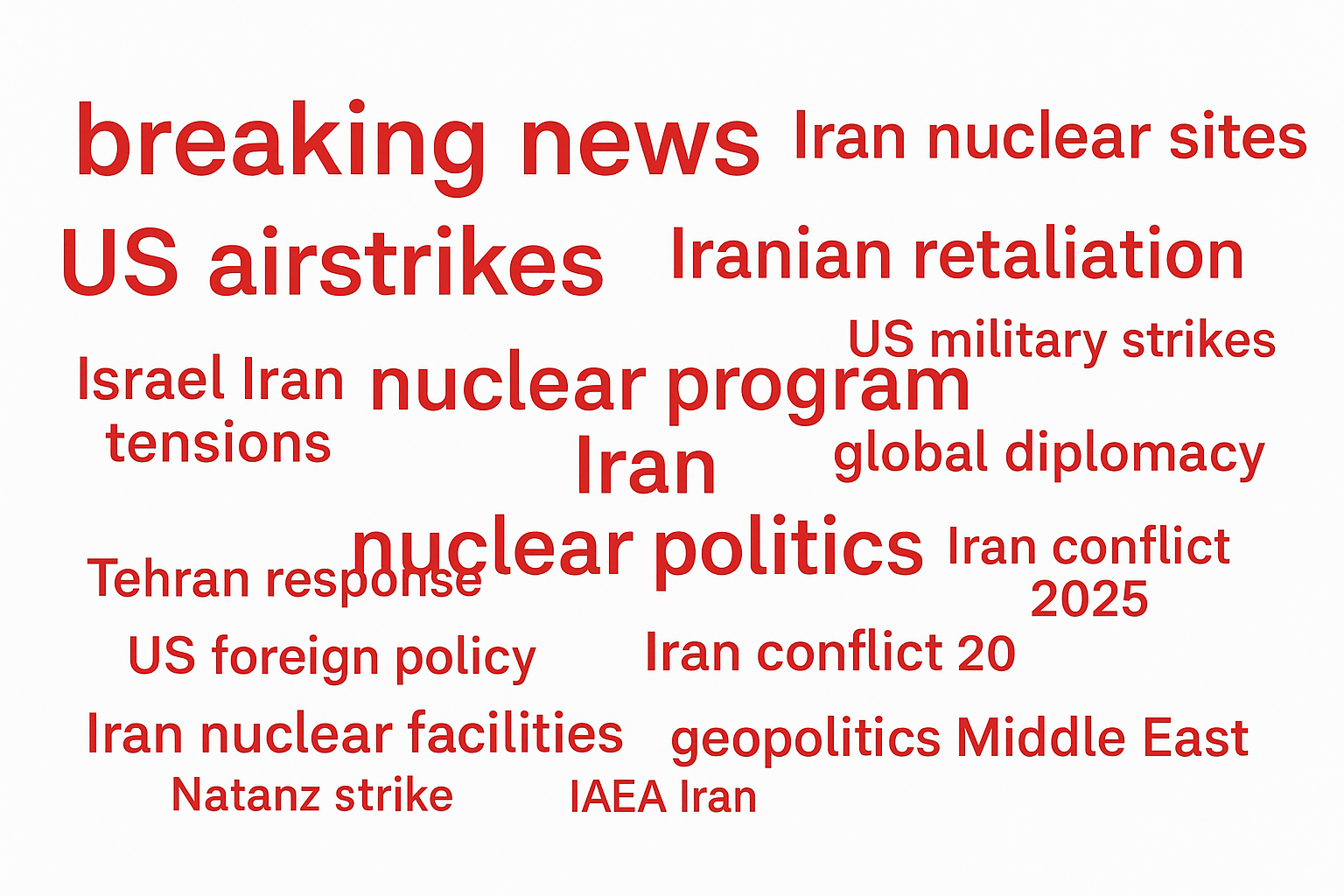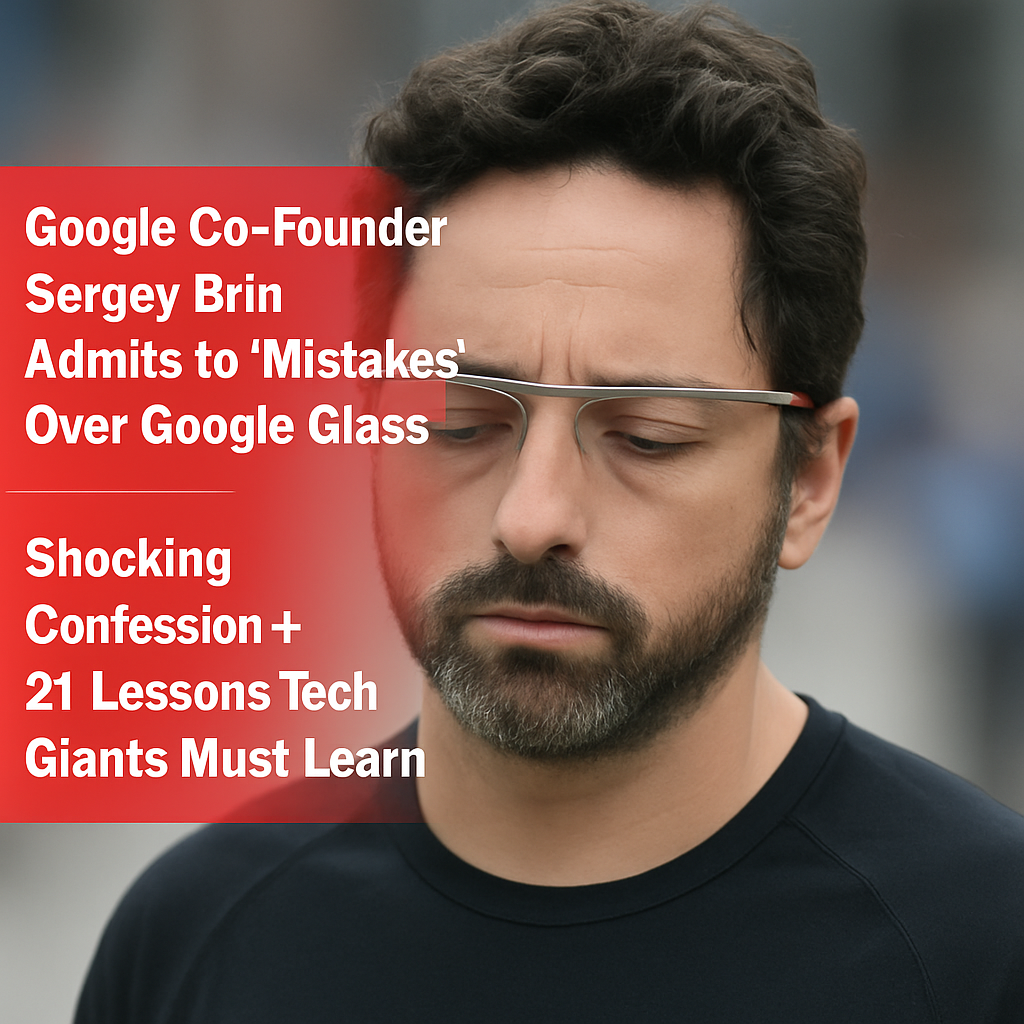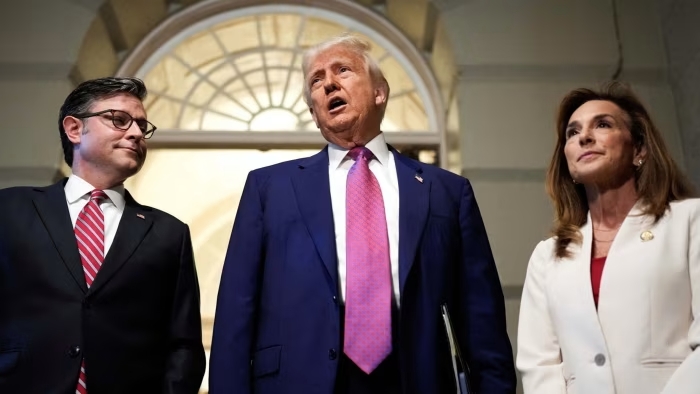AI Surges, Samsung Foldables Debut & E‑U Pushes Youth-Safety Tech Amid Tariff Turmoil

Artificial Intelligence, more popularly known as AI, has evolved from just being a futuristic notion to become a major center of gravity of technological innovation—today, it is the gold rush of the current technology environment. With the advent of generative AI models that are dynamically changing and redefining the content creation landscape across industries to complex and advanced machine learning algorithms that are taking center stage in revolutionizing key sectors like healthcare, finance, and transportation, the investment landscape of AI has witnessed a stunning surge across world technology markets in the first half of the year 2025.
Enterprise Adoption of AI Reaches New Heights
Big companies are placing enormous bets on the convergence of artificial intelligence, a major trend towards embracing this game-changing technology. In this context, top cloud computing giants such as Amazon, Microsoft, and Google are aggressively rolling out cutting-edge AI-as-a-service platforms. These platforms are designed to make companies deploy their own customized models themselves, all with minimal need for extensive technical expertise and infrastructure. Moreover, open-source AI frameworks are expanding phenomenally and at a rapid rate, which is allowing a rising number of startups to effectively compete with big players by offering leaner and smarter solutions that can shake up traditional markets.
Major Trends in Business AI:
Low-code AI platforms facilitate quick integration between departments.
Predictive analytics is powering inventory, sales forecasting, and HR retention.
AI co-pilots are now gaining a lot of popularity and are used for various activities such as coding, drafting documents, and handling customer relationships.
AI Ethics and Governance Conversations are Heating Up
As artificial intelligence keeps growing and evolving, there is a simultaneous push on international policymakers and major corporations to rapidly create and implement full-fledged ethical frameworks. In this regard, acute issues such as algorithmic prejudice, data protection, and transparency have taken center stage and are being addressed prominently. The European Union’s newly concluded AI Act imposes stringent regulatory standards particularly designed to suit what it classifies as “high-risk” applications of AI, thereby forcing technology sector leaders into a compliance preparedness mode.
Samsung Foldables Revolutionize the Smartphone Industry
Samsung’s long-awaited and much-hyped Galaxy Z Fold6 and Z Flip6 have finally arrived, boasting a sequence of groundbreaking enhancements that solidify the company’s hold and dominance in the highly competitive foldable market. This landmark release is a huge step forward in such key areas as display durability, battery life, and productivity-driven features, and it is a huge milestone for the technology.
The Galaxy Z Fold6: A Productive Business Tool Housed in a Conveniently Compact Package
With a more sophisticated and high-technology hinge mechanism, and much improved AMOLED screens that provide outstanding visual quality, the Fold6 surpasses the conventional notion of a smartphone; it is now an incredibly powerful productivity device that is capable of fulfilling the needs of its users. Furthermore, Samsung has made great efforts to upgrade and further improve the functionality of its S-Pen, particularly fulfilling the needs of businesspeople and creative workers alike.
A Brief Overview of the New Features:
Snapdragon 8 Gen 3 processor with improved cooling
Armor Aluminum body and Gorilla Glass Victus 3
Enhanced One UI 6.1 with AI-powered task automation
Z Flip6: Made for Gen-Z and Fashion-Conscious Buyers
Samsung’s Z Flip6 brings a larger outer display, new customizable widgets, and improved selfie camera AI capabilities. The phone attracts creators as well as fashion-oriented consumers, pushing foldables into the mainstream.
EU Places Youth-Safety Tech Rules on Online Platforms
With screen time and internet activity increasing to record levels among young people, the European Union has moved forward in a big way by setting up a series of strong and comprehensive rules directly focusing on the safety of young people in the digital space. The key steps, under the revised Digital Services Act (DSA), place some responsibilities on platforms so that they design experiences suitable for various ages, and setting up parental controls enabling guardians to effectively monitor and control children’s activities online.
Key Problems of the European Union’s Youth Safety Mandate:
Compulsory age verification systems
Targeted ad restrictions on users under the age of 18
Artificial intelligence moderation for obscene content detection
Operators such as TikTok, YouTube, and Instagram will now be required to change their UX design, algorithm-based content recommendation, and data collection regulations. Non-compliance attracts heavy fines of up to 6% of worldwide turnover.
Effect on Technology Firms and Application Developers
Tight enforcement of these numerous policies is forcing app developers to carefully design their applications with compliance being an utmost priority. This includes mandatory inclusion of child-safety toolkits, which are meant to safeguard children, and dynamic content filters that can adapt according to certain criteria. Additionally, industry professionals firmly believe that these mounting regulatory pressures will have strong impact and dictate global legislation in the future, especially in major markets like the United States and Asia.
Tariff Turmoil: New Trade Tensions Arise Between China and the United States Again
With the unprecedented growth of artificial intelligence and continued product innovation, the global technology supply chain is facing unprecedented stress due to the deluge of tariff disputes that have reemerged. The U.S. government recently made the dramatic step of reintroducing high tariffs on a range of products, including key semiconductor gear, solar cells vital for renewable energy, and batteries for electric vehicles that are exported from China. The move was taken on complaints of unfair subsidies being provided and the threat to national security of these imports.
Ripple Effects Throughout the Tech Community
Tariffs will be expected to increase the price of consumer electronics, smartphones, and automobile parts. Multinational corporations are considering reshoring production or relocating manufacturing to Vietnam, India, and Mexico to keep costs down.
The response of industries and the stock market too.
Chipmakers like AMD and NVIDIA saw their performance and share prices decline temporarily.
Apple is working hard to push its efforts to diversify its supply chain by looking outside China.
Tesla, based on recent reports, is revising its current expansion plans for its Shanghai Gigafactory. These are sophisticated dynamics that highlight and emphasize the ways in which shifts in the geopolitical landscape can significantly impede or derail the course of innovation, depending on the power and resilience of supply chains.
AI and Foldables: A Strategic Synergy
The intersection of foldable hardware technology with artificial intelligence is a new and promising frontier in the innovation of user experience. Samsung has made considerable strides in this new frontier by starting to integrate advanced on-device generative AI models that allow and augment features like:
Live or real-time translation
Context-based camera optimization
Smart scheduling habits and timely reminders are a must.
As foldable phones inch closer to becoming the new standard in the tech space, the fact that artificial intelligence is the mortar that keeps it all together and makes an enormous impact in terms of usability, simplifies operations, and customizes user experience must be highlighted. Additionally, the current competition between various Android original equipment manufacturers (OEMs) and Apple—whose speculated foldable iPhone model is coming out in the year 2026—will certainly push this symbiotic union to newer heights, fueling innovation and industry growth.
The Global Tech Landscape in Transition
The convergence of fast-paced AI innovation, hardware breakthroughs, regulatory overhaul, and geopolitical unrest is remaking the international tech environment. Developers, consumers, regulators, and companies alike need to stay nimble and up to date.
Looking Ahead: Key Points to Note
AI will continue to expand exponentially, but regulation is catching up.
Foldables are changing and slowly becoming mainstream as productivity and lifestyle tools. Youth protection will determine platform design in the next 5 years. Tariff politics will propel tech reshoring and cost restructuring.
Conclusion:
Navigating Innovation Amid Uncertainty Tech innovation is booming and burdened in equal measure—driven by AI, hardware innovation, and world ambition, but stalled by ethical, economic, and political hurdles. The firms that will succeed in these conditions are the ones that can balance compliance, creativity, and consumer confidence. Keep up. Stay nimble. The future of technology is coming together—literally.

 English
English 